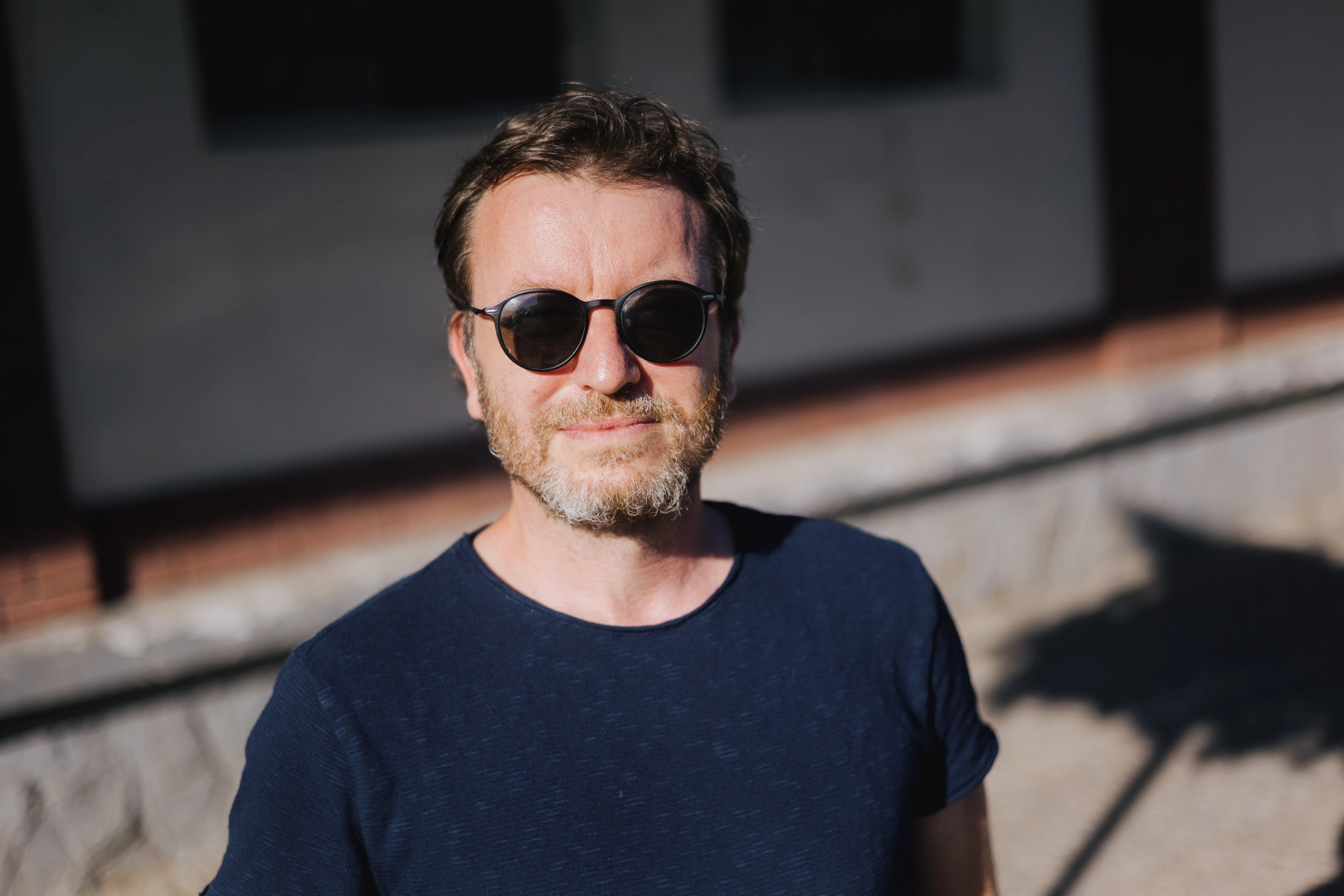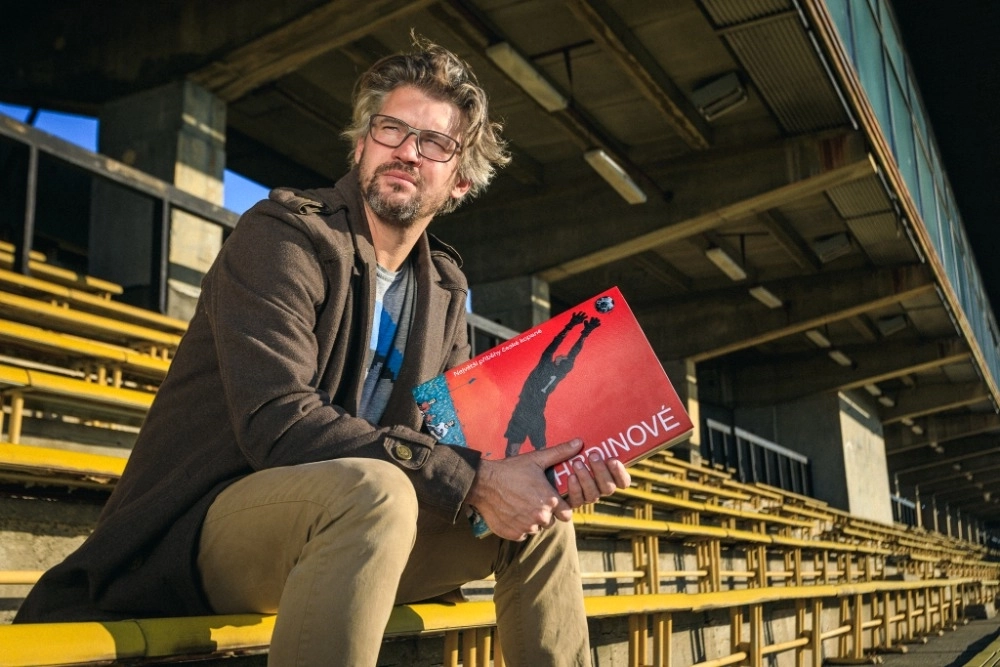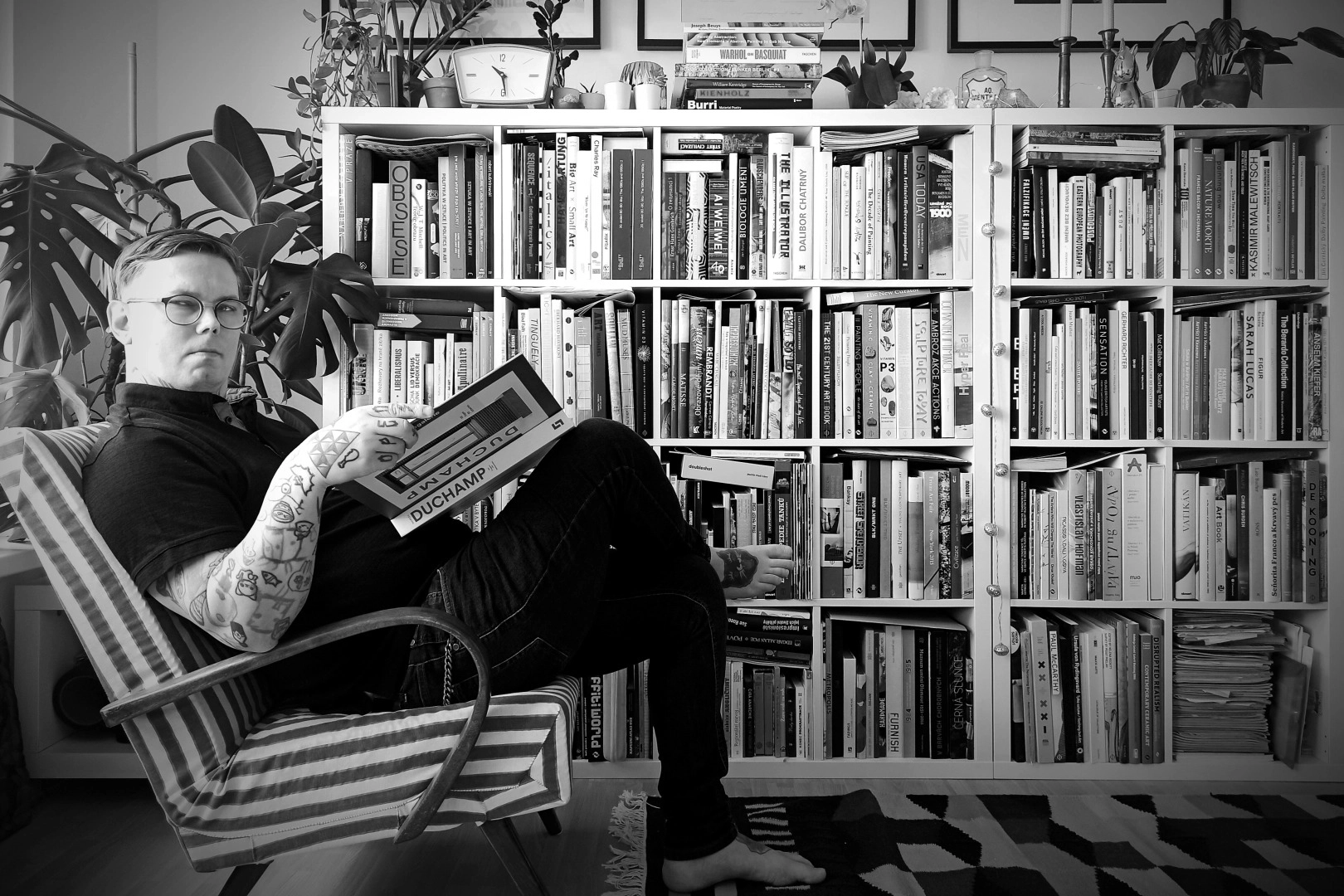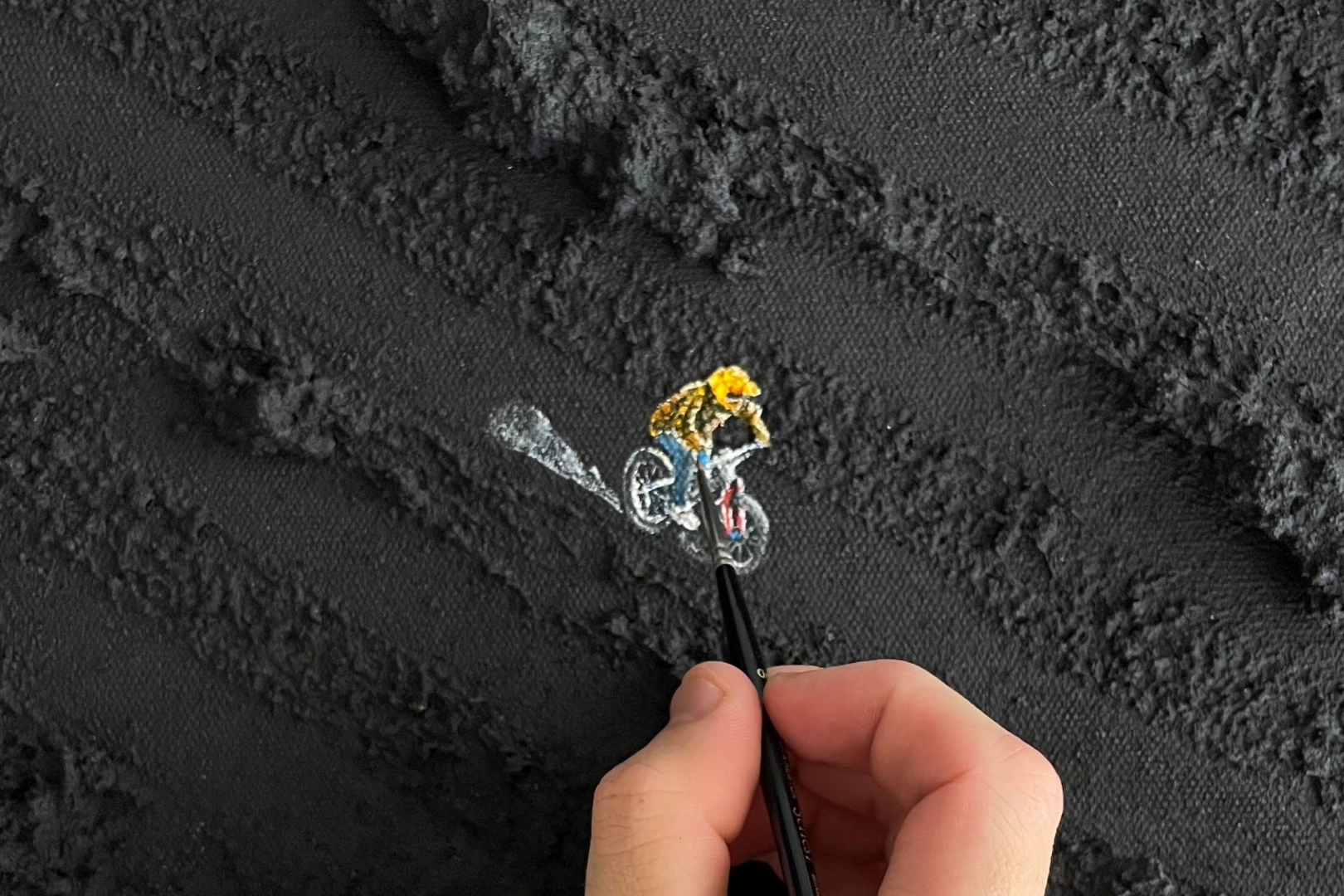The unique atmosphere brimming with magic forms the backdrop of human and animal figures along with colourful fireworks that harmonically shift through vibrant shades on the canvas. Alena Anderlová’s paintings will enthral you. Including those, she is presenting at the ROW ROW ROW exhibition.
For ROW ROW ROW, you’ve prepared an extensive series of paintings inspired by rowing. How do you find working with this topic?
The combination of water and figural motifs is very close to me. Water is an element that often appears in my works. In the past, I worked on the topic of the Jizerská 50 cross-country ski race and, in a way, water’s present there as well although in a different state. For the ROW ROW ROW exhibition, I’ve created six medium-sized and several smaller paintings that form closed cycles. The reflection of the water’s surface and the sun's rays play an important part in my works. In the series of smaller square formats, the movement of the sun creates a halo and devil’s horns. The closer the athlete is to the horizon their colour changes from clear white to red. The halo motif also appears in the larger painting with the reflection of the athlete’s figure. The painting of four athletes transforms a four boat into an eight through their reflection on the water’s surface. Then there is the standalone series of rowers standing on the shore with oars. They can’t sail because the riverbed has dried out in one painting and grown over with reeds in another. In other paintings, I created individual sequences of rowing of oars so the images could be made to move to create a video. The image of four rowers shows crossed oars that create an abstract triangle structure.
Rowers and skiers from the Skol!!! exhibition aren’t by far the first subjects of your paintings to do with sport. I recall cyclists, ice-skaters, footballers, bikers, runners, snowboarders, or skaters. Do you imagine how the athletes feel and their mental mechanisms or is your creative process more about the fascination with the visual movement dynamics?
I’m more interested in the visual aspect, in capturing different phases of movement. I don’t care about creating a portrait of a particular athlete but rather about expressing a certain atmosphere and showing off groups of athletes.
I have to ask: what is your personal relationship to sport? How do you feel about the seemingly incompatible connection between art and sport? Whether we’re talking about professional performance or leisure activities.
Sport is entirely a leisure-time activity for me and I consider bicycles to be an important mode of transport. I like exercise that takes place in nature. We have been depicting movement in art since the beginning. Cave paintings were showing moving animals and ancient statues of athletes like The Discobolus. Portrayals of sport in the arts are one of the many forms of figural art. I also like watching sports. I welcomed the invitation to the Primátorky rowing race, I could observe everything right there and experience the one-of-a-kind atmosphere. I also had this opportunity for the Jizerská 50 cross-country ski race where I even dared to take part, although for a fraction of the race’s distance. I found it very inspiring for my painting.
Your work is typical for using stencils through which you multiply and abstract the individual figures (athletes) into various geometrical patterns. How does this creation process work? Could you describe how concrete figural paintings become these almost kaleidoscopic formations?
The synchronised movement of an eight’s crew reminds me of a joint organism. I had the idea to create a „water blossom“ with eight „flower petals“ (boats) floating on the water. I created several variants that can mutually animate each other so the paintings move like the rowers. Using stencils is ideal for creating different variations.
Athletes aren’t your only inspiration. Your paintings also depict animal motifs. Usually in situations typical for humans. The clash between nature and civilisation is an obvious, often ironic plot line critiquing the contemporary consumerist society. How do you feel in the present-day world? Are you appalled, exasperated? Do you feel that humans chase after profit at the expense of nature?
Nature and technical civilisation are often present in my works. Nowadays, there are only a few places in the world where nature has been left untouched. My paintings often capture ironic encounters. I try to point out our current ecological issues through humour. The covid epidemic has shown us that humans are still a part of natural processes that are beyond our control.
You live in Klatovy but you also have an atelier in Prague. Do you need to balance your life between the city and nature?
I need to offset a stay in the city with being in nature. During my studies I spent more time in the city, now it’s the other way around. For me, staying in nature is very important and is a big inspiration.
In the paintings created for the ROW ROW ROW exhibition, we can appreciate a specific sense of colour and colour composition. These also appear in your other works. Do you solely use acrylics? How would you describe your painting process - do you focus on one piece until it’s finished or do you work on several paintings at once?
I’m used to working on a series of multiple paintings at once. I start with a colour background, usually acrylic, on which I lay out the composition in charcoal. After that, I continue painting with oil paint or acrylic. I also use prints of outline stencils that I cut out from paper. I paint the stencils with a paint roller and press them onto the canvas.
You’re a graduate of Michael Rittstein’s atelier at the Academy of Fine Arts in Prague. Has your work been influenced by him at all? I’m thinking of what is maybe an over-simplified link to when he created the Sports Epic (Sportovní epopej). Do you have anything else in common besides your fascination for sport?
Already at the Academy, I’ve created several “sporting” paintings. They were usually landscapes with cyclists, bikers, and cars. Michael Rittstein and I have common roots in Šumava where both of us also have our studios. The atmosphere and micro-stories from Šumavy then naturally find their way into our paintings.
What are your plans, what are you working on right now?
Right now, I’m working on the continuation of a series of paintings called „On The Road“ (Na cestě) that form a string of animal stories connected by the movement of the sun across the sky. It’s a kind of animal road movie that can be made into a video. On the 20th of May, I will be presenting my work at the Klatovy cinema’s Pecha Kucha night, everyone is invited.
.jpg)
Alena Anderlová (*1977, Klatovy) studied applied painting at the High School of Applied Art in Prague, book graphics at the Václav Hollar Art School and later painting at the atelier of Antonín Střížek and Michael Rittstein at the Academy of Fine Arts in Prague. The author is included in private collections in the Czech Republic as well as internationally. She lives in Klatovy and collaborates with galleries across the border in Germany.
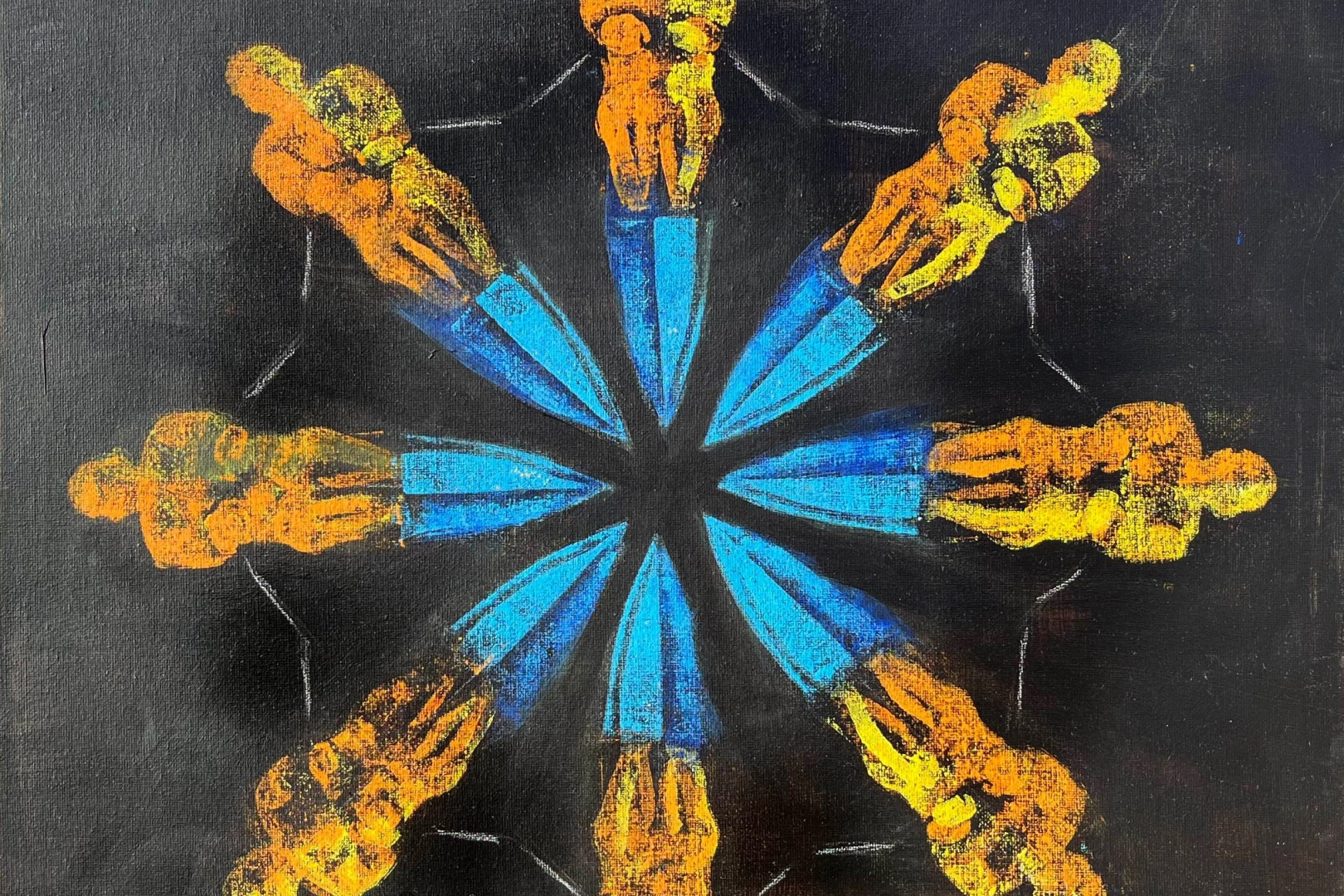
.jpg)
.jpg)
.jpg)
.jpg)
